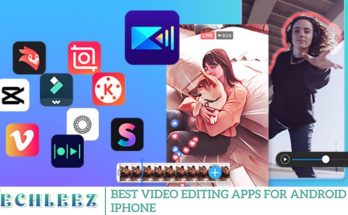Social media videos have become one of the most powerful ways to engage audiences across platforms like Instagram, TikTok, YouTube, and Facebook. However, standing out in a crowded digital space requires more than just compelling content it demands seamless storytelling and polished presentation. One of the most effective techniques for achieving this is the use of transitional hooks.
Transitional hooks are short, engaging elements that help guide viewers smoothly from one segment of a video to another. These transitions not only enhance pacing but also maintain audience attention, creating a cohesive and professional viewing experience. When used effectively, they can elevate the overall quality of content, making videos more dynamic, engaging, and impactful.
Everything you need to know about transitional hooks, including what they are, how they work, their key features, benefits, potential drawbacks, and alternative techniques. Plus, we’ll explore how you can leverage them to create more captivating and high-performing social media content.
What are the Transitional Hooks for Social Media Videos?
Transitional hooks in social media videos are techniques and visual elements designed to create smooth, engaging shifts between different sections or scenes. These can include visual effects, sound effects, or narrative cues that enhance storytelling and maintain audience attention. By integrating these transitions effectively, creators can ensure a cohesive and professional viewing experience.
Transitional hooks vary in style, ranging from simple cuts and fades to dynamic effects like zoom-ins, swipes, and animations. No matter the approach, the goal remains the same—to prevent abrupt shifts that could disrupt the viewer’s experience. Instead, these transitions create seamless fluidity, making it easier for audiences to follow the narrative without distraction.
For example, a popular transitional hook on TikTok is the “swipe” effect, where the screen appears to shift smoothly into the next scene, often used to change settings or themes. On Instagram, creators frequently use fade-ins and animations to transition between clips, keeping viewers engaged and entertained. These techniques help build anticipation and sustain attention—an essential factor on fast-scrolling platforms.
By mastering transitional hooks, content creators can make their videos more polished, engaging, and memorable, ultimately boosting audience retention and interaction.
How Transitional Hooks for Social Media Videos Work
Transitional hooks are an essential part of video editing, helping to create smooth, engaging, and seamless shifts between different sections of a video. Whether through visual effects, audio cues, or narrative techniques, transitions play a crucial role in maintaining audience engagement and improving the overall flow of content. Below, we break down the most effective types of transitional hooks and how they enhance video storytelling.
Visual Transitions
Visual transitions rely on effects to create seamless scene changes. These include:
- Fades – A gradual dissolve from one scene to another, making the transition feel smooth and natural.
- Wipes & Swipes – A directional movement that shifts the frame from one segment to the next.
- Zooms & Morphing – Advanced effects where one object or scene transforms into another for a dynamic storytelling effect.
These techniques make transitions feel intentional and visually appealing rather than abrupt.
Audio Transitions
Sound plays a crucial role in guiding viewers through video content. Common audio transitions include:
- Whooshes & Swishes – Sound effects that emphasize motion between scenes.
- Music Changes – A shift in background music to signal a new section or mood.
- Dramatic Cues – Sudden sound effects that create suspense, excitement, or emotional impact.
- By pairing audio with visual transitions, creators can craft a more immersive viewing experience.
Narrative Cues
For instructional or storytelling content, transitions can be guided through speech. Examples include:
- Voiceovers – Lines like “Next, let’s explore…” or “Now, moving on to…” help signal a shift.
- On-Screen Hosts – Presenters making direct calls to action or introducing the next segment.
- Narrative transitions work particularly well for explainer videos, tutorials, and vlogs.
Text & Graphic Transitions
Text and graphics can serve as engaging transitional elements, including:
- Dynamic On-Screen Text – Phrases like “Up Next…” or “Stay Tuned” to build anticipation.
- Animated Logos & Overlays – Branded graphics that introduce new sections seamlessly.
- These elements keep viewers engaged and reinforce the video’s structure.
Match Cuts & Jump Cuts
Advanced editing techniques can also function as transitions:
- Match Cuts – Smooth transitions by matching shapes, colors, or actions between two clips (e.g., transitioning from a coffee cup to someone sipping it).
- Jump Cuts – Abrupt cuts that remove unnecessary content, creating a fast-paced and energetic feel, commonly used in vlogs and social media clips.
Features of Transitional Hooks for Social Media Videos
Transitional hooks do more than just ensure a smooth flow between video segments—they enhance engagement, creativity, and overall viewer experience. Below are the key features that make transitional hooks an essential tool for video content creators:
Seamless Flow for Better Engagement
The primary role of transitional hooks is to maintain a smooth, uninterrupted flow in videos. Instead of abrupt scene changes, these transitions create a natural and polished viewing experience, reducing distractions and keeping audiences engaged.
Enhanced Visual Appeal
Transitions like wipes, fades, zooms, and morph effects add a visually dynamic touch to videos. These elements make content more captivating, ensuring that viewers stay interested while also reinforcing the storytelling aspect of the video.
Customization for Different Platforms
Transitional hooks offer flexible customization options to match the tone and style of various social media platforms. Whether it’s a fast-paced TikTok video, an engaging Instagram Reel, or a professional YouTube vlog, transitions can be adjusted in speed, direction, and effect intensity to fit the creator’s vision.
Strengthening Brand Identity
For content creators and businesses, transitions can double as branding elements. Custom animations, logo reveals, and signature color schemes incorporated into transitions help reinforce brand identity while ensuring a professional and recognizable style.
Building Anticipation and Excitement
Strategic transitions, such as countdowns, suspenseful zoom-ins, or dramatic sound effects, can generate anticipation. For instance, using a quick swipe effect with a “whoosh” sound can heighten excitement before revealing a product or important message.
Pacing Control for Better Storytelling
Transitions help dictate the pace of a video. Fast jump cuts or swipes create high-energy content that keeps up with short attention spans, while slow fades or smooth zooms add a more relaxed, cinematic feel. The right pacing ensures that the video aligns with its intended mood and purpose.
Consistency for a Professional Look
Using a uniform transition style throughout a video series helps establish a creator’s unique aesthetic. Consistency in transitions enhances professionalism and makes content easily recognizable to returning viewers, strengthening audience retention.
Pros of Transitional Hooks for Social Media Videos
Integrating transitional hooks into social media videos offers multiple advantages, from enhancing viewer retention to improving overall content quality. Below is a summary of the key benefits:
| Benefit | Description |
|---|
| Improved Viewer Retention | Smooth transitions keep viewers engaged, reducing drop-off rates. |
| Professional & Polished Look | Well-executed transitions make videos appear more refined and high-quality. |
| Better Storytelling | Transitions create a natural flow, making narratives more cohesive and compelling. |
| Increased Engagement | Visually appealing and dynamic transitions encourage viewers to watch till the end. |
| Enhanced Brand Identity | Custom transitions incorporating logos, colors, and animations reinforce branding. |
| Optimized for Different Platforms | Transition styles can be tailored for TikTok, Instagram Reels, YouTube, and more. |
| Creates Anticipation & Excitement | Suspenseful or energetic transitions build hype for upcoming content. |
| Smoother Content Pacing | Helps control the speed of the video, ensuring a balanced and engaging rhythm. |
| Reduces Disruptive Jumps | Eliminates harsh cuts that might feel abrupt, making videos more enjoyable to watch. |
Cons of Transitional Hooks for Social Media Videos
While transitional hooks improve video quality and engagement, they also come with some challenges. Below is a summary of the potential downsides:
| Drawback | Description |
|---|
| Overuse Can Be Distracting | Excessive transitions may overwhelm viewers and reduce content clarity. |
| Increases Editing Time | Adding and fine-tuning transitions requires extra effort and can slow down production. |
| Potential for Lower Authenticity | Highly polished transitions may make content feel less organic, especially for casual or personal videos. |
| Not Always Necessary | Some content types (e.g., raw storytelling or vlog-style videos) may not benefit from frequent transitions. |
| Platform Limitations | Certain social media apps may not support advanced transitions or require external editing tools. |
| Can Affect Video Load Time | Heavy transitions with animations or effects may increase file size and impact playback speed. |
| May Require Advanced Editing Skills | Complex transitions often demand proficiency with video editing software, which can be a barrier for beginners. |
Transitional Hooks for Social Media Videos Alternatives
While transitional hooks improve video flow and engagement, other techniques can also elevate content quality. Here’s a comparison of some effective alternatives:
| Alternative Method | Description | Best For |
|---|
| Jump Cuts | Quick edits that remove unnecessary pauses, keeping the video fast-paced and engaging. | Vlogs, tutorials, and short-form content. |
| Text Overlays | Adding captions, subtitles, or on-screen text to emphasize key points or guide viewers. | Educational videos, tutorials, and product showcases. |
| B-Roll Footage | Supplementary clips inserted between main footage to provide context or variety. | Storytelling, product demos, and behind-the-scenes content. |
| Music & Sound Effects | Background music and sound effects enhance mood and engagement. | Emotional storytelling, motivational content, and action-packed videos. |
| On-Screen Graphics & Stickers | Fun animations, emojis, and stickers make videos more dynamic. | TikTok, Instagram Reels, and entertaining content. |
| Call-to-Action (CTA) Prompts | Encouraging viewers to like, share, comment, or follow at key moments in the video. | Marketing, brand promotions, and influencer content. |
| Speed Adjustments | Speeding up or slowing down footage for dramatic or comedic effect. | Time-lapse videos, product tutorials, and storytelling. |
| Lighting & Camera Angles | Enhancing video quality with proper lighting and creative angles. | High-production content, product reviews, and professional videos. |
Tips for Implementing Transitional Hooks Effectively
- Keep it natural: Avoid overusing transitions to prevent distractions.
- Match your niche: Use transitions that align with your video style and audience preferences.
- Test different styles: Experiment with various transitions to see what works best for engagement.
- Use high-quality editing tools: Apps like CapCut, Adobe Premiere Pro, and InShot can help refine transitions.
Frequently Asked Questions
What are transitional hooks in social media videos?
Transitional hooks are attention-grabbing phrases or effects that smoothly guide viewers from one scene or topic to another, keeping them engaged throughout the video.
Why are hooks important in social media videos?
Hooks capture the audience’s attention within the first few seconds, preventing them from scrolling away. They create curiosity, build anticipation, and encourage viewers to watch until the end.
How can I make my video transitions smooth?
Use seamless editing techniques like jump cuts, match cuts, or motion transitions. Pair them with compelling voiceovers or text overlays to maintain audience engagement.
What types of videos benefit most from transitional hooks?
Any type of content, including tutorials, product demos, vlogs, and storytelling videos, can benefit from transitional hooks to maintain viewer retention.
Conclusion
Transitional hooks are essential for creating engaging and professional social media videos. Whether you’re using motion, cuts, props, sound, or text-based transitions, mastering these techniques will significantly enhance your content’s appeal and effectiveness.
Transitional hooks, you can boost viewer retention, increase engagement, and grow your audience on platforms like Instagram Reels, TikTok, and YouTube Shorts.




